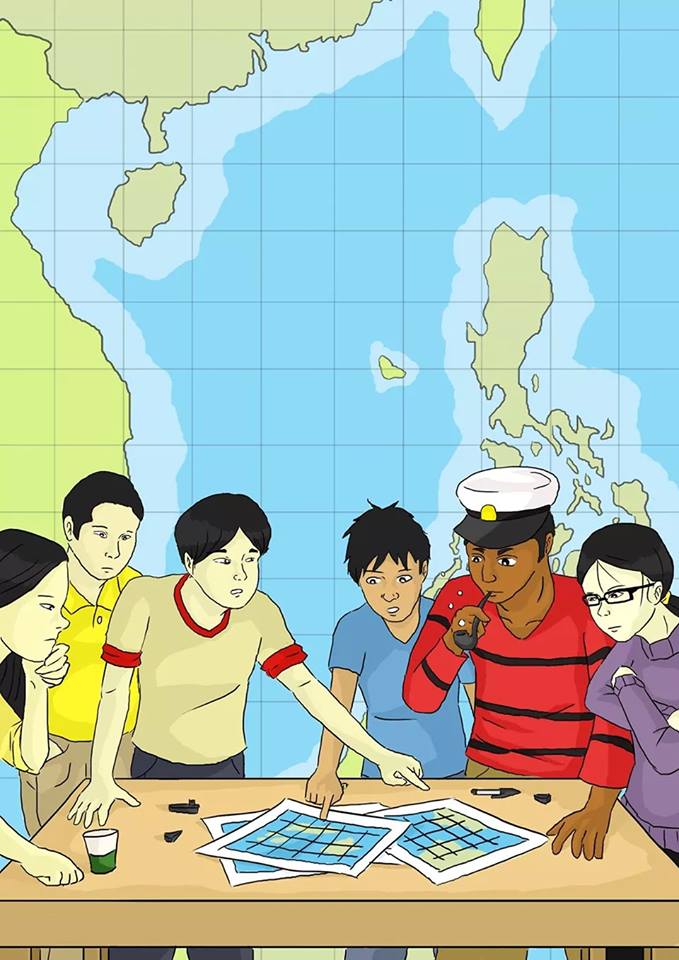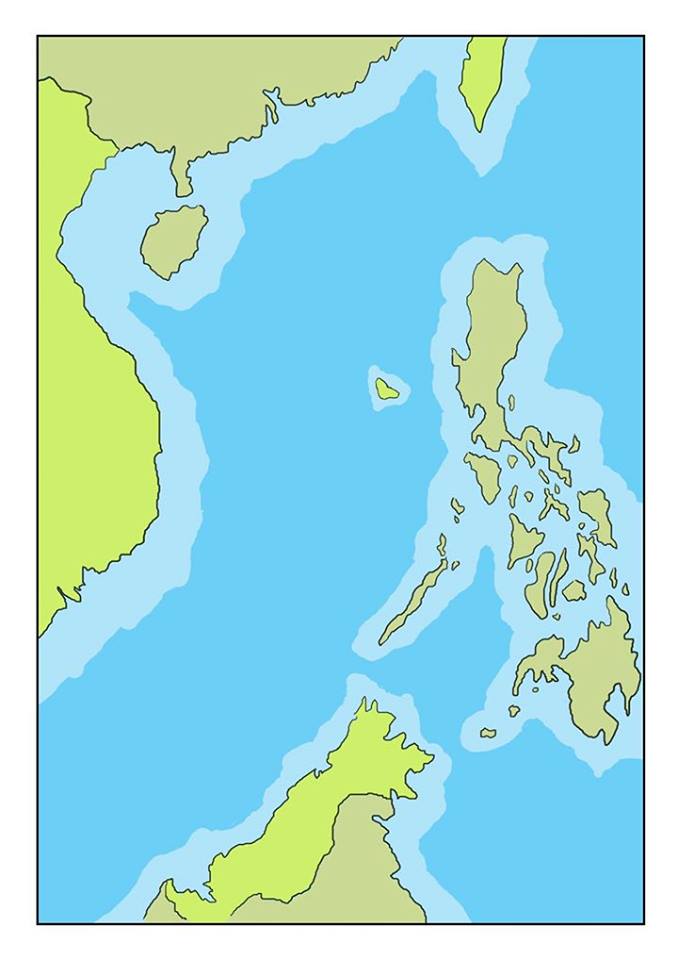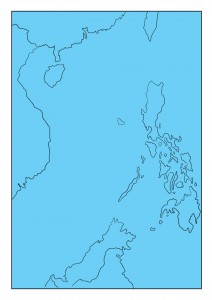For the past years, there has been growing animosity between the Philippines and China about the issue in the South China (West Philippine) Sea. This has to be the lowest point of bilateral relations between the two state governments, and for majority of Filipinos, a deep-seated sense of frustration over the length of the conflict and the lack of a resolution. Imagine: it has been more than a decade since the 90’s when these disputes arose. In this light, there must be subtle reasons to the way China is behaving towards its neighbors in Southeast Asia (e.g. Vietnam, Malaysia, Philippines) and East Asia (i.e. Japan). It feels threatened about its current context, so its political outlook towards this issue is not overconfident. There are three possible reasons to China’s belligerent behavior: its aim to occupy the leadership position in Asia, the United States intervention there, and the economic threats within and outside it.
Leadership in the Asia-Pacific Region
With its rising power, the countries in the Asia-Pacific are observing whether China’s rise is peaceful or threatening. For years, there has been an established status quo with Japan as the economic powerhouse. Now that it has been overtaken in the region, China can attempt to assume a larger role. Its government has always asserted that its rise is peaceful. Through various diplomatic, multilateral ties to its neighboring countries (e.g. ASEAN+3, ASEAN Regional Forum, etc.), it not only put itself up as a potential economic partner, but also as a capable political partner with probity in promoting equality, mutual respect and rapid development. Not to mention, it has strategically used soft power to market itself, such as: giving relief aid using its hospital ship when Typhoon Yolanda struck the Philippines, and implementing wider technological markets in the industry, among many others. Through striking peaceful accords with neighboring countries in the region, China tries to be a part of the system, which has not been witnessed ever since.
There is a difference, however, with being a leader than with being a hegemon. China asserts that despite obtaining various military assets and increasing its military budget, it does not wish to assert any form of violence to attain its desires. Suggesting that its reasons for upgrading its military are for security reasons, there is only one country which does not buy China’s new face: the United States. With its pivot to Asia, the US is still the number one dominant power in the West Pacific especially with its foothold in Japan and South Korea. China wants to push the US out of the area because it feels threatened towards its strong military presence in the region. For the Southeast Asian countries, especially like the Philippines, the US plays a key role in obtaining a balance within the region because it is a trusted power and the best security provider against pirates, terrorists, and other potential threats to national security such as North Korea. For years now, the Association of Southeast Asian Nations (ASEAN) continues to attempt a secure balance of power between the two large nations as if they were both put on a balancing scale because it considers them essential to its ongoing progress and development. China, however, dislikes a US-centered order as it thwarts its plans and desires to win against the balance. It will attempt to fight for that position with the US. This is the geo-political situation being played now, and any imbalance between the two powers could spell disaster for the Southeast Asian and the East Asian nations. This desire for leadership and greater influence within the region is also the struggle that China is willing to push for in the hopes to combat US influence there.
Military: US Intervention in Asia
For years now, the US has been monitoring the intentions of China’s rise with guarded suspicion. Throughout its rise, both nations have not come to terms on various issues. With a suspicion towards Beijing’s actions, the US government has for many times slammed the Communist Party of China (CPC). Some of these issues include China’s human rights violations, its One-China policy towards Taiwan, the setup of the East China Sea Air Defense Identification Zone (ADIZ), its arms sales to so-called “rogue states” such as Syria or North Korea, and its rebuke of Western style multi-party democratic elections, among many others. The US has for several times harshly criticized the processes, decisions, and actions of the CPC as illiberal, a violation of basic human freedoms. Because of these differences, they have become staunch enemies.
After World War II, the US was established as the fundamental superpower, and they do not wish to see this disrupted through any means. Considering that China is a superpower in the region, many scholars believe that the US has engaged with a containment policy against it. Despite the US being “distracted” with the War on Terror in the Middle East, it stepped up its alliances with China’s allies in the region such as Myanmar and India through state visits and trade pacts. Not only do Korea and Japan have military bases established by the US, but there will also be increased rotations of its navy forces and training exercises that encompass the Philippines and Vietnam and a new base to be built on Australia. The US government has also made incessant statements that the status quo in the South China Sea and East China Sea must remain unhindered. It seems no surprise that in the eyes of the Chinese political leaders, it feels it is being surrounded and harassed by its rival.
To counteract these efforts, China has sought to create a buffer zone in the South China Sea and the East China Sea by making these into its own lakes through its strict implementation of an access denial policy. With this, all vessels from other countries that enter its lakes including small fishing boats have always been spurned. With its nine-dashed line argument, it claimed sovereign right to defend itself, thus resorting to creating islands out of the reefs and shoals. With five, different billion dollar projects of transforming reefs into islands, and with possibly more to come in the future, it has made these territories its own without negotiations to those who have already been contesting these in the past decades. Speculations arise that these will either be airfields for its jets, docking ports for its warships, or supply outposts for their navy and air force. The CPC in 2012 highlighted and emphasized the South China Sea as a “core national interest” alongside Taiwan and Tibet. This means China’s aggressiveness is not just empty rhetoric or overconfidence: they are willing to defend it with all means necessary. Should these bases be instituted, they will be game changers in the balance of power because the closest militarized island to the Philippines is Mischief Reef, which is within the ranges of Vietnamese, Bornean and Philippine mainland.
Economic Threats Within and Beyond
Within the past few years, the world has witnessed China’s insurmountable rise as the world’s second economic powerhouse just after the United States. Since the start of the new millennium, foreign direct investments from multinational corporations have continuously poured inside its markets. After learning Western methods in education and science, its own technology improved and made itself a match against knowledge economies outside. For some economists, they say that it could soon overtake the US before the end of the decade. If this is true, China has nothing to fear right? Not exactly.
Historically, the CPC gained political power through towering over other political forces, thus remaining the number one authority in the land. The party wants to keep it that way. To continue this status quo, it will have to allow its economic gains to be ubiquitously felt throughout the country. The CPC used its economic success to legitimize its rule. Many, however, continue to be under poverty. The CPC considers this issue a threat that could thwart the entire country into a possible political predicament similar to the Chinese Revolution which could overthrow them. Not only does it fear the poor it has mandated itself to give equality to, but it is also wary of the culturally or ethnically marginalized whose voices are unheard of, such as those in Xinjiang. In fact, it is this sharp awareness of searching for threats within its own borders that has put China on the pedestal of questionable human rights actions. Each mode of unrest for them is a matter that must be quelled.
From outside its borders, it also feels that its economic rise is threatened by its pertinent energy situation. To continue feeding its liquid natural gas (LNG) and oil demand, it searched various places in order to secure this ever-growing need even from other continents. Before the end of the previous decade, it tried to secure two sea lines of communication for the transport of its gas and oil: the South China Sea and the Malacca Strait. Since it also attempts to obtain oil and gas from Africa, the Middle East, and some European countries, it requires a clear path around the Indian subcontinent. Because of such, it has brokered partnership port deals with the likes of Bangladesh, Belgium, Greece, and India for easier transportation and access. This path for hydrocarbons that stretches all the way to the African and European continent is called the String of Pearls. For the fuel tankers to come to the Malacca Strait, China established naval security deals with the states in the region, namely: Singapore, Malaysia and Thailand. Despite these deals, China wishes to plant its own navy within the region in cases of maritime terrorism and piracy. When it comes to the South China Sea, it was discovered not to contain substantial oil deposits, but relevant amounts of LNG. China needs this to answer its energy demand, especially as it will shift many of its industries to use of natural gas instead of coal. Securing the String of Pearls and its source of LNG within the South China Sea is the main economic reason why its presence has become very prevalent. With various choke points from the Panama Canal to the Malacca Strait, China does not wish these paths to be hindered nor its LNG resource to be snuffed out.
Conclusion
This analysis does not aim to make China look like a victim, neither is it to make the US the oppressor. Rather, the point is to find possible root reasons through China’s past behaviors in the hopes that a resolution may be brought about to the aging issue. For many Filipinos, they feel that a military standoff seems inevitable in the near future. Nevertheless, the issue can be brought to a close through diplomatic means with the concerned parties.
For many analysts, China’s actions have only isolated it. Not only are precious resources and the establishment of security assets at stake, but also are higher principles such as the defense of global commons, the freedom of the high seas, and the unrestricted use of international waterways. To press for these issues, the Philippines followed a triple action plan (TAP) to gain the side and interest of other nations. This plan can be done simultaneously instead of in steps, and thus is appropriately called an approach. It prioritizes the following: 1) the cessation of all activities that escalate tension, 2) the push for the Declaration of Conduct of Parties in the South China Sea, and 3) the use of objective arbitration as the basis for claims. To counteract China’s nine-dash line, the Philippines brought the argument to procedures of the UN Convention on the Law of the Sea (UNCLOS). Contrary to many reports this action is not before the International Tribunal Law of the Sea (ITLOS) or before the UN, but with an ad hoc arbitration in league with the UNCLOS. In the eyes of China, the arbitration has no jurisdiction whatsoever, and the Philippines has violated the second part of its own TAP. Within the Declaration of Conduct, all parties must settle the disputes bilaterally without additional parties intervening, meaning only the Philippines and China should negotiate without the presence of other countries like the US. The Philippines, however, brought the case before other countries because it knows that China is a strong country and that third eye observers are needed. Because of this, China has strongly slammed the Philippines for what it considers as provocative and irrational actions.
Before coming to the negotiation table, each side must first put down its own supremacy or bias. Inasmuch as the problem is about territory, it is also about one side’s attitude towards the issue. China should not assert its historical reasoning; the US should not push for reasons of the sovereignty of its allies; and the Philippines should not push for its exclusive economic zone argument. With this clean slate, it is possible to divide the resources present and create a proportional compromise at the South China Sea for its territory and its resources. In the past there have been incidents where the power of diplomacy prevailed such as the case for East Timor and Australia, and Indonesia and the Philippines. As difficult as it is to see China and the US as friends, the powers at play need only to first take baby steps to accomplish desirable peace—and this can start between multilateral talks between ASEAN and China. At this point, in time, it is still not too late to bring this decade-long conflict to an end. There is still hope for the powers to converse, and set their arguments and attitudes aside. If this can be done, peace can be in sight.
Sources:
Baviera, S. A. (2000). Strategic Issues in Philippine-China Relations Comprehensive Engagement. Quezon City, NCR, Philippines: Philippine-China Development Resource Center. Retrieved September 1, 2014.
Goh, E., & Simon, S. W. (Eds.). (2008). China, the United States and Southeast Asia: Contending Perspectives on Politics, Security and Economics. New York City, New York, United States of America: Routledge Taylor and Francis Group.
Swee-Hock, S., Lijun, S., & Kin Wah, C. (Eds.). (2005). ASEAN-China Relations Realities and Prospects. Singapore, Singapore: Institute of Southeast Asian Studies.
Written by Harveen Ang
Illustration by Pio Tendero






